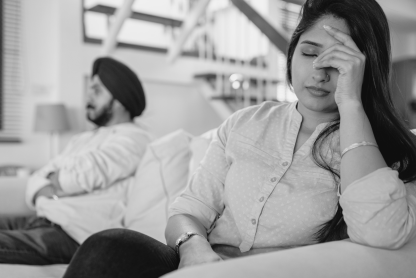Compulsive spending disorder, also known as shopping addiction, can have a significant impact on an individual’s financial, emotional, and mental well-being. Overcoming this disorder can be a challenging process. With the right tips and tools, it is possible to break free from the cycle of compulsive spending. One of the most effective tools for overcoming compulsive spending disorder is to establish a budget and stick to it. This can involve creating a list of necessary expenses and avoiding unnecessary purchases. Another helpful tip is to identify triggers that may lead to impulsive spending, such as stress, anxiety, or boredom. Once these triggers are identified, individuals can develop healthy coping mechanisms to manage difficult emotions.
Table of Contents
- What is compulsive spending disorder and how does it differ from normal shopping behavior?
- What are the potential negative consequences of compulsive spending disorder?
- What are some common triggers for compulsive spending and how can they be identified?
- What is financial therapy and how can it help people with compulsive spending disorder?
- How can social media and advertising contribute to compulsive spending and how can this be managed?
- How can support groups and peer counseling be beneficial for people with compulsive spending disorder?
- How do mindfulness techniques help manage compulsive spending urges?
- Frequently Asked Questions

What is compulsive spending disorder and how does it differ from normal shopping behavior?
Compulsive spending disorder, also known as compulsive buying disorder or oniomania, is a psychological condition characterized by an irresistible urge to buy things.
The urge persists even when the items are not needed, or affordable, or may cause harm to one’s financial, social, and personal well-being.
Compulsive spending disorder is different from normal shopping behavior in several ways. While many people enjoy shopping and may occasionally make impulsive purchases, compulsive spending disorder is characterized by the frequency, intensity, and negative consequences of the behavior.
In addition, people with compulsive spending disorder may also exhibit other symptoms, such as:
1. Preoccupation with shopping or spending money
People with compulsive spending disorder may constantly think about shopping, make lists of things they want to buy, and spend a lot of time researching and planning purchases.
2. Impulsive and excessive buying
People with compulsive spending disorder may buy things they don’t need, can’t afford, or don’t have space for. They may also buy multiples of the same item, or buy things they don’t use or never wear.
3. The negative emotional and financial impact
Compulsive spending disorder can cause significant distress and harm to a person’s emotional and financial well-being. People with this disorder may experience depression, anxiety, guilt, and shame, as well as financial problems such as debt, bankruptcy, and loss of savings.
4. Difficulty controlling urges to shop
People with compulsive spending disorder may feel a lack of control over their shopping behavior, despite negative consequences. They may try to stop or limit their shopping, but find it difficult to do so.
5. Relationship problems
Compulsive spending disorder can also have a negative impact on personal relationships. People with this disorder may hide purchases from loved ones, lie about how much they spend, or feel guilty about the money they are spending.
Research has shown that compulsive spending disorder affects approximately 5-8% of the population and can occur in both men and women. The disorder can begin in adolescence or adulthood and may be triggered by stressful life events, such as a loss, trauma, or major life change.
Compulsive spending disorder is often comorbid with other mental health conditions, such as depression, anxiety, substance abuse, and eating disorders. It is important for individuals with this disorder to seek professional help from a mental health provider, who can provide an accurate diagnosis, and develop a comprehensive treatment plan.
Compulsive spending disorder is a serious condition that can have negative consequences on a person’s emotional and financial well-being and personal relationships. While normal shopping behavior can be enjoyable and even therapeutic, compulsive spending disorder is characterized by the frequency, intensity, and negative consequences of the behavior. Seeking professional help is important for individuals with compulsive spending disorder, and a range of treatment options are available to help manage symptoms and improve quality of life.
What are the potential negative consequences of compulsive spending disorder?
1. Financial problems
One of the most significant consequences of compulsive spending disorder is the financial burden it can create. Individuals who struggle with compulsive spending may spend beyond their means, leading to credit card debt, unpaid bills, and other financial issues. This, in turn, can lead to stress, anxiety, and even bankruptcy.A study published in the Journal of Consumer Research found that compulsive buyers are more likely to have lower incomes, higher debt-to-income ratios, and more credit card debt than non-compulsive buyers. The study also found that compulsive buyers were more likely to experience financial distress and report lower levels of financial well-being.
2. Relationship problems
Compulsive spending disorder can also have a significant impact on personal relationships. People struggling with compulsive spending may hide their purchases or lie about their spending habits, leading to a loss of trust in loved ones. This can cause strain in relationships, leading to arguments, breakups, or divorce.
A study published in the Journal of Family and Economic Issues found that compulsive buying behavior was negatively related to marital satisfaction. The study found that compulsive buying behavior was associated with higher levels of marital conflict and lower levels of marital satisfaction.
3. Emotional problems
Compulsive spending disorder can also have a negative impact on an individual’s emotional well-being. People struggling with compulsive spending may experience feelings of guilt, shame, and anxiety related to their shopping behavior. This, in turn, can lead to depression, low self-esteem, and a decreased quality of life.
A study found that compulsive buying behavior was associated with a higher prevalence of psychiatric comorbidity, including depression, anxiety, and substance abuse. The study also found that compulsive buying behavior was associated with higher levels of impulsivity and emotional dysregulation.
4. Physical health problems
In addition to emotional problems, compulsive spending disorder can also have a negative impact on physical health. People struggling with compulsive spending may experience increased stress and anxiety, which can lead to physical symptoms such as headaches, stomach problems, and difficulty sleeping.
A study published in the Journal of Psychosomatic Research found that compulsive buying behavior was associated with increased stress and negative affect. The study also found that compulsive buying behavior was associated with higher levels of cortisol, a stress hormone, which can have negative effects on physical health.
5. Legal problems
In some cases, compulsive spending disorder can lead to legal issues. For example, individuals may engage in shoplifting or fraud to support their shopping habits, leading to criminal charges and legal consequences.
A study published in the Journal of Financial Therapy found that compulsive buying behavior was associated with a higher likelihood of legal problems related to debt, including bankruptcy and foreclosure. The study also found that compulsive buyers were more likely to engage in impulsive and risky behaviors, including criminal activity.
What are some common triggers for compulsive spending and how can they be identified?
1. Emotional Triggers
Emotional triggers are the most common cause of compulsive spending behavior. People with compulsive spending disorder often use shopping as a way to cope with negative emotions such as anxiety, depression, or stress.
A study found that individuals with compulsive buying tendencies were more likely to experience negative emotions, such as depression, anxiety, and anger than those without such tendencies.
2. Social Triggers
Social triggers can also play a role in compulsive spending behavior. People may feel pressured to keep up with their peers or social group and may use shopping as a way to fit in or feel accepted.
A study found that individuals who reported higher levels of social comparison were more likely to engage in compulsive buying behavior.
3. Environmental Triggers
Environmental triggers, such as the sights, sounds, and smells of a shopping mall, can also trigger compulsive spending behavior. The mere presence of shopping opportunities may trigger a compulsive spender to make purchases they don’t need.
A study found that the physical environment of a shopping mall, including music and scents, can increase impulsive buying behavior.
4. Cognitive Triggers
Cognitive triggers refer to the thoughts and beliefs that lead to compulsive spending behavior. For example, individuals may believe buying a particular item will make them feel better or improve their self-esteem.
A study found that individuals with compulsive buying tendencies reported higher levels of materialism and lower levels of self-esteem than those without such tendencies.
5. Situational Triggers
Situational triggers refer to specific events or situations that lead to compulsive spending behavior. For example, a sale or special offer may trigger an impulse to buy something that is not needed. A study found that materialistic values were associated with an increased likelihood of responding to situational cues, such as sales or promotions.
Identifying triggers for compulsive spending is an important step in managing and treating this disorder. By understanding the underlying factors that lead to compulsive spending behavior, individuals can develop effective strategies for managing their impulses and avoiding unnecessary purchases. Seeking professional help and support from mental health professionals, such as therapists or counselors, can also be beneficial in managing compulsive spending behavior.
What is financial therapy and how can it help people with compulsive spending disorder?
1. What is Financial Therapy?
Financial therapy is a form of therapy that combines financial counseling with psychotherapy to help individuals and couples address financial issues that are impacting their emotional and mental health.
Financial therapy aims to help individuals improve their relationship with money, reduce financial stress, and achieve their financial goals. It is a collaborative process that involves a licensed therapist and a financial professional, such as a financial planner or advisor.
A study published in the Journal of Financial Therapy found that financial therapy was effective in reducing compulsive buying behavior in individuals with compulsive buying disorders.
Financial therapy can help people with compulsive spending disorder by addressing the underlying emotional and psychological factors that contribute to their impulsive spending.
Individuals with compulsive spending disorder may use shopping as a way to cope with negative emotions such as anxiety, depression, or loneliness. Financial therapy can help individuals develop healthier coping mechanisms and learn how to manage their emotions without turning to shopping.
How can Financial Therapy Help People with Compulsive Spending Disorder?
1. Identifying Triggers
Financial therapy can help individuals identify the triggers that lead to their impulsive spending, such as stress, boredom, or low self-esteem. By identifying these triggers, individuals can develop strategies to avoid or cope with them.
2. Changing Beliefs and Behaviors
Financial therapy can help individuals identify and change their beliefs and behaviors around money. For example, individuals may believe that buying things will make them happy, or that they need to keep up with their peers’ spending habits. Financial therapy can help individuals develop more realistic beliefs about money and spending.
3. Developing a Financial Plan
Financial therapy can help individuals develop a financial plan that aligns with their values and goals. This plan may include creating a budget, paying off debt, and saving for the future. By having a clear plan, individuals can feel more in control of their finances and less likely to engage in impulsive spending.
A study published in the Journal of Financial Counseling and Planning found that financial therapy was effective in reducing financial stress and improving financial behaviors in individuals with high levels of financial stress. The study found that financial therapy was particularly effective when combined with psychotherapy.
Compulsive spending disorder is often comorbid with other mental health conditions, such as depression, anxiety, substance abuse, and eating disorders.
How can social media and advertising contribute to compulsive spending and how can this be managed?
1. Influencer Culture
Social media has given rise to a new kind of celebrity: the influencer. Influencers are individuals who have gained a large following on social media platforms by posting pictures and videos of their lifestyles, including the products they use and the places they go. Influencers often receive free products or sponsorships from brands, which they then promote to their followers. This creates a culture of materialism and consumerism, where followers are encouraged to buy products to emulate the influencer’s lifestyle.
2. Targeted Advertising
Social media platforms and online retailers use algorithms to track users’ browsing and purchase histories. This information is then used to display targeted advertisements that are tailored to the individual’s interests and preferences. This can create a feeling of FOMO (fear of missing out) and encourage impulsive purchases.
A study published in the Journal of Interactive Advertising found that exposure to social media posts that depict luxury products can increase materialistic attitudes and desires in individuals. The study suggests that limiting exposure to social media posts that promote materialism can help manage compulsive spending.
3. Comparison Culture
Social media can create a culture of comparison, where individuals compare their lives and possessions to those of their peers. This can lead to feelings of inadequacy or the need to keep up with peers’ spending habits, which can contribute to overspending.
How to Manage Compulsive Spending in the Age of Social Media and Advertising:
1. Limit Exposure
One way to manage compulsive spending in the age of social media and advertising is to limit exposure. This can be done by unfollowing influencers who promote materialism and consumerism, turning off targeted advertising, or taking breaks from social media altogether.
2. Practice Mindfulness
Practicing mindfulness can help individuals become more aware of their emotions and impulses around spending. By taking a moment to pause and reflect before making a purchase, individuals can identify whether their desire to buy something is driven by a genuine need or an impulse.
A study published in the Journal of Consumer Research found that compared to others on social media can lead to feelings of envy and a desire to buy more, even when it’s not financially feasible. The study suggests that practicing mindfulness and focusing on gratitude can help manage these feelings.
3. Set Limits
Setting spending limits can help individuals stay within their budget and avoid impulsive purchases. This can be done by creating a budget, setting a limit on credit card spending, or avoiding online shopping altogether.
A study published in the Journal of Financial Therapy found that financial therapy can help individuals with compulsive buying disorders manage their impulsive spending behaviors.
The study suggests that addressing the underlying emotional and psychological factors that contribute to compulsive spending can help individuals develop healthier financial habits.
How can support groups and peer counseling be beneficial for people with compulsive spending disorder?
1. Provides a sense of community
Joining a support group or participating in peer counseling can help individuals with compulsive spending disorder to feel less alone and isolated.
It provides a sense of community and a safe space where people can share their experiences and struggles with others who understand what they are going through.
This can be particularly helpful for individuals who may feel ashamed or embarrassed about their spending habits.
2. Offers emotional support
Support groups and peer counseling sessions can offer emotional support for individuals with compulsive spending disorder. This can be particularly important for individuals who may not have a strong support system in their personal lives. Being able to share their experiences and feelings with others who understand can help individuals feel less overwhelmed and more emotionally grounded.
3. Encourages accountability
Support groups and peer counseling can provide a sense of accountability for individuals with compulsive spending disorder. Members of these groups can hold each other accountable for their spending habits, and provide a supportive environment to help each other stay on track.
This can be particularly helpful for individuals who may struggle with self-discipline or have difficulty setting and sticking to financial goals.
4. Provides practical advice and resources
Support groups and peer counseling sessions can provide practical advice and resources for individuals with compulsive spending disorder. Members of these groups may share their own experiences and strategies for managing their spending habits, as well as recommend financial tools and resources that have been helpful to them.
This can be particularly useful for individuals who may feel overwhelmed or unsure about how to begin managing their compulsive spending habits.
5. Helps to reduce shame and stigma
Participating in support groups and peer counseling can help to reduce the shame and stigma surrounding compulsive spending disorder. Members of these groups are often able to offer support and encouragement in a non-judgmental way, which can help individuals feel more confident and less ashamed about their struggles with compulsive spending.
Support groups and peer counseling can be valuable tools for individuals with compulsive spending disorder. They provide a supportive environment for people to share their experiences and struggles, receive practical advice and resources, and feel a sense of community and accountability. If someone you know is struggling with compulsive spending, reach out to a support group or peer counseling program to find the help and support you need.
How do mindfulness techniques help manage compulsive spending urges?
1. Mindful breathing
One of the most basic and effective mindfulness techniques is mindful breathing. By focusing on the sensation of the breath moving in and out of the body, individuals can bring their attention back to the present moment and away from the urge to spend. Research has shown that even brief periods of mindful breathing can help reduce stress and improve emotional regulation
2. Body scan
Another mindfulness technique that can help manage compulsive spending urges is the body scan. This involves systematically focusing on different parts of the body and noticing any physical sensations or areas of tension. By doing this, individuals can become more aware of how their emotions and thoughts manifest in their bodies and can use this awareness to manage their urges more effectively.
3. Mindful shopping
Mindful shopping involves bringing awareness and intention to the shopping experience. This can involve making a shopping list ahead of time, setting a budget, and avoiding impulsive purchases. Compassion meditation can reduce shame and guilt associated with compulsive spending by promoting self-acceptance and awareness of flaws.
4. Compassion meditation
Compassion meditation involves cultivating feelings of kindness, empathy, and compassion towards oneself and others. By practicing compassion meditation, individuals can become more accepting of themselves and their flaws, which can help reduce feelings of shame and guilt associated with overspending.
5. Mindful movement
Mindful movements, such as yoga or tai chi, can help individuals become more aware of their bodies and their physical sensations.
This can help reduce stress and anxiety
It can provide a healthy outlet for managing difficult emotions that may trigger compulsive spending urges.
Incorporate mindfulness techniques into their daily lives to recognize and manage their urges more effectively. While it may take time and practice to develop these skills, the benefits of mindfulness are well worth the effort.
Frequently Asked Questions
Compulsive spending disorder is relatively common, with estimates suggesting that between 5-8% of the general population may experience the disorder at some point in their life.
Yes, compulsive spending can be related to other mental health conditions, such as anxiety disorders, depression, and substance abuse.
Family and friends can support someone with overspending disorder by providing emotional support, encouraging them to seek treatment, and helping them to develop healthy spending habits. They can also assist with managing finances and provide accountability and encouragement in recovery.
Healthy spending habits for individuals with compulsive spending disorder include creating a budget, avoiding impulse purchases, and identifying alternative ways to cope with triggers such as stress or anxiety.









